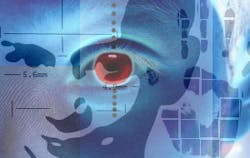Government applications drive biometric growth
Tampa, Fla. -- When it came to ensuring security and continuity of federal agency and military credentials, the HSPD-12 and FIPS 201 initiatives created a template for a government policy that could help the commercial sector reap big benefits.
More than a year old, the government's de facto secure ID badging mandate has standardized credentials throughout most government agencies and proved to be an economic windfall for several vendors in the secure badge and printer space. Now some commercial markets are seeing a trickle down affecting their own space. Banking and financial organizations, as well as some critical infrastructure operations have begun to adopt the government model as their own.
And now that President Bush has asked federal agencies to coordinate the use of biometrics for the purpose of tracking and identifying potential security risks, some in the fragmented biometrics industry are hoping for similar payback.
In late June, the president signed HSPD-24, which directed federal agencies to integrate processes and interoperable systems to the fullest extent permitted by law - like the FBI's IAFIS and the DHS' US VISIT programs -- and make available to other agencies all biometric and associated biographical and contextual information associated with individuals who pose a reasonable suspicion of threat to national security. HSPD-24 was a result of the 9-11 Commission's report that was strongly critical of federal agencies' lack of communication and data sharing during the national crisis.
According to Walter Hamilton, the chairman of the International Biometrics Industry Association, this new HSPD-24 directive is not just a tool to help government security agencies track potential human threats, but to associate real biometric data to them.
The growing popularity of biometric technology in the government sector was evident at the annual Biometric Consortium Conference held this week at the Tampa Convention Center. More than 2,000 attendees, mostly from the DOD, NSA, FBI and other government agencies, were treated to the latest in fingerprint, gait and face recognition, voice, vein and signature verification, hand geometry, as well as iris and retina scans. While the government boon in biometrics has spurred plenty of smiles and optimism among vendors attending the event, will they see the same migration to the commercial market because of it?
"The federal government is the one driving force in what is biometrics today," said Russ Ryan, vice president of marketing for the National Biometric Security Project. "From its secure border programs to the safe traveler initiatives, it is the feds who are at the forefront of igniting advanced research and development, as well as creating industry standards to benefit the users. The federal government has traditionally been an early adopter when it comes to technology and biometrics is certainly helping them fill a void they felt was lacking since the events of 9-11."
Ryan is critical of the biometrics' industry lack of substantive growth in the commercial sector, admitting that it essentially was its own worst enemy following the terrorist attacks of 2001.
"You have to look at the structure of the industry prior to the 9-11 attacks," said Ryan. "There were close to 100 biometric companies that were essentially R&D labs with little or no resources. Many of these companies, who were nothing more than small device entrepreneurs, tried to leverage the events of 9-11 and began flooding the market with biometrics that were big on claims but short on substance. As a result of this biometrics hysteria post-9-11, a lot of products that failed to live up to their hype created a great deal of disillusionment among many users."
But as the biometric hype pirates quickly faded, large government systems integrators like Boeing, Siemens, Unisys and Lockheed Martin began to implement biometric solutions that actually worked with their systems. Ryan admits this brought a level of maturity and focus back to the biometric market place.
And much like others technologies in the physical security space, many of the small biometric vendors have almost ceased to exist; they've simply been acquired by larger companies in recent years.
"There are very few single-solution technology companies left in the biometric market," said Ryan. "Today if you don't offer more than one modality to your customer, you are not going to survive."
While the tenor of the Tampa conference centered on government agency applications, Ryan and other market observers agree that the commercial sector stands to benefit from this new biometric surge.
"As larger federal and government initiatives are deployed and the success stories continue to expand, it will provide a renewed sense of credibility to the technology we may have lost among our commercial users," said Ryan. "Now don't misunderstand, there are plenty of very large commercial applications that are extremely successful and have been operating for some time. But as the large integrators create more open system opportunities for biometrics among agency users, I think you will see more excitement for the technology on the corporate side. [It is] very similar to what is happening with credentialing."
